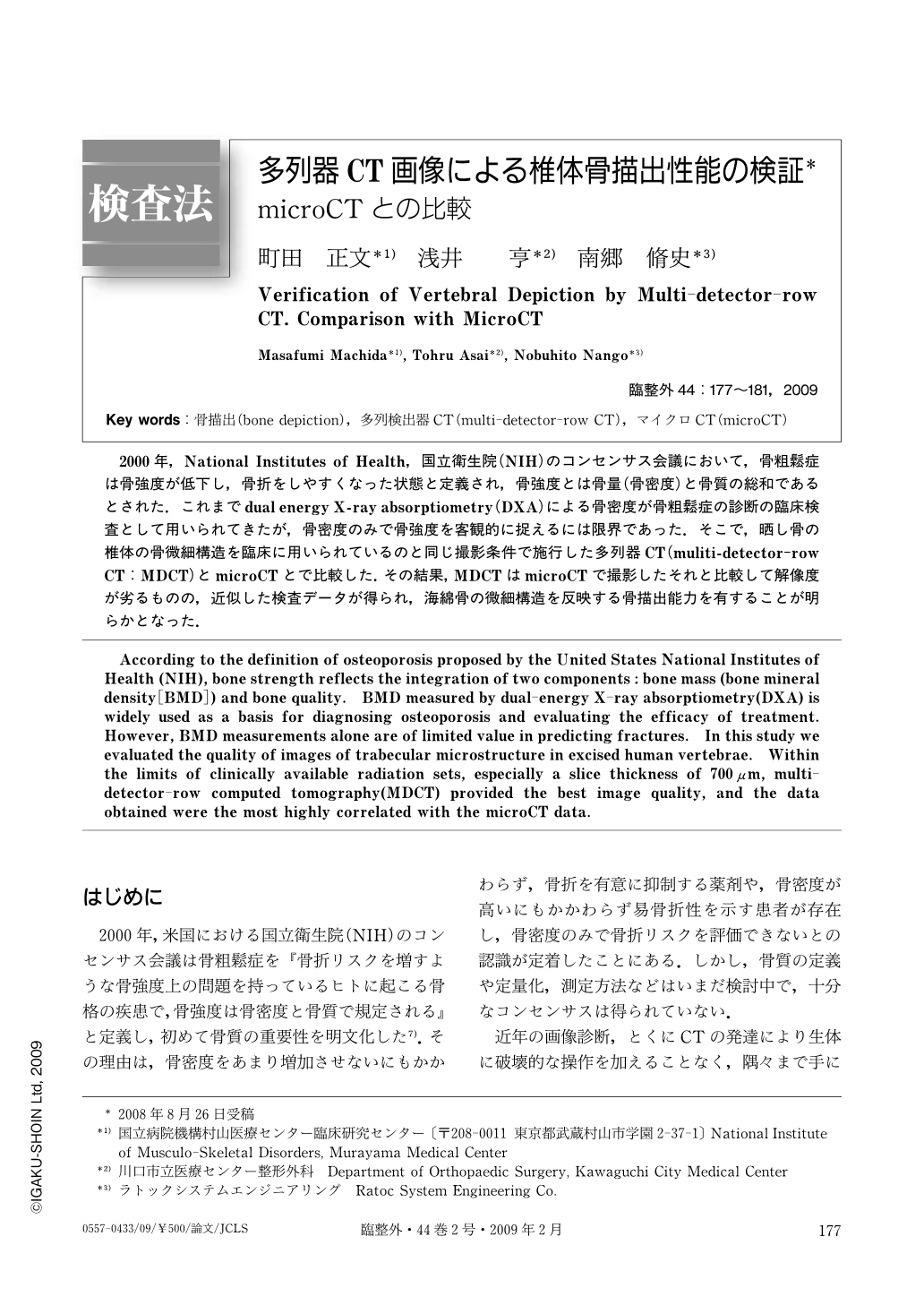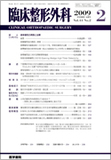Japanese
English
- 有料閲覧
- Abstract 文献概要
- 1ページ目 Look Inside
- 参考文献 Reference
2000年,National Institutes of Health,国立衛生院(NIH)のコンセンサス会議において,骨粗鬆症は骨強度が低下し,骨折をしやすくなった状態と定義され,骨強度とは骨量(骨密度)と骨質の総和であるとされた.これまでdual energy X-ray absorptiometry(DXA)による骨密度が骨粗鬆症の診断の臨床検査として用いられてきたが,骨密度のみで骨強度を客観的に捉えるには限界であった.そこで,晒し骨の椎体の骨微細構造を臨床に用いられているのと同じ撮影条件で施行した多列器CT(muliti-detector-row CT:MDCT)とmicroCTとで比較した.その結果,MDCTはmicroCTで撮影したそれと比較して解像度が劣るものの,近似した検査データが得られ,海綿骨の微細構造を反映する骨描出能力を有することが明らかとなった.
According to the definition of osteoporosis proposed by the United States National Institutes of Health (NIH), bone strength reflects the integration of two components:bone mass (bone mineral density[BMD]) and bone quality. BMD measured by dual-energy X-ray absorptiometry (DXA) is widely used as a basis for diagnosing osteoporosis and evaluating the efficacy of treatment. However, BMD measurements alone are of limited value in predicting fractures. In this study we evaluated the quality of images of trabecular microstructure in excised human vertebrae. Within the limits of clinically available radiation sets, especially a slice thickness of 700μm, multi-detector-row computed tomography (MDCT) provided the best image quality, and the data obtained were the most highly correlated with the microCT data.

Copyright © 2009, Igaku-Shoin Ltd. All rights reserved.


